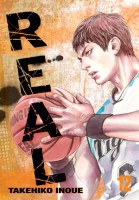 Creator: Makoto Kobayashi
Creator: Makoto Kobayashi
U.S. publisher: Studio Proteus
ISBN: 9781560600787
Released: February 1991
Original release: 1985
Awards: Kodansha Manga Award
Before there was Konami Kanata’s Chi’s Sweet Home there was Makoto Kobayashi’s What’s Michael?, proving that the international appeal of cats and cat manga is nothing new. What’s Michael? began serialization in Comic Morning in 1984 and ran for five years and nine volumes, winning a Kodansha Manga Award in the process. In addition to English, at least part of the series has been translated into French, German, and even Polish. What’s Michael?, Book Two is the second of two volumes to be released in English by Studio Proteus. The volume, published in 1991, collects material that was originally released in Japan in 1985. Although only two volumes of What’s Michael were released by Studio Proteus, Dark Horse later released the series almost in its entirety. (Some strips were left out due to potentially objectionable content.) Unfortunately, both the Studio Proteus and Dark Horse editions of What’s Michael? are long out of print.
Michael is an orange tabby tomcat, an American Shorthair with plenty of personality and representative of all cats and their quirks. What’s Michael? follows him and his interactions with other cats and humans, who are often just as peculiar as the felines they love. There’s the man who seems to be a living cat-magnet, the couple who didn’t completely think through the combination of claws and their new wicker furniture, the man who put far too much thought into living with a cat, a girl who delights in pestering Michael, the yakuza who despite their hardened demeanor have a soft spot in their hearts when it comes to four-legged fuzzballs, and all of the other people who can’t get enough of or who have had way too much of cats. Michael’s fellow felines, along with all their foibles and charms, also make frequent appearances. The result is an entertaining and highly amusing collection of short cat manga.
What’s Michael? works so well because Kobayashi is exceptionally attuned to cats and their behavior as well has how humans react when confronted by that behavior. Everything in What’s Michael? I have seen before with the cats, family members, and friends that I have known, which is what makes it so delightfully funny. One of the things that impressed me the most about What’s Michel?, Book Two was how little of the comedy relied on dialogue, which makes sense considering that cats don’t really communicate through words. Instead, Kobayashi relies on the actions, reactions, and overreactions of the cats and other characters to drive the humor of the series. And he succeeds magnificently—What’s Michael? is hilarious. It really is a shame that the series is currently out of print and somewhat difficult to find in English; it’s definitely worth tracking down.
Although there are recurring characters and running jokes, and even a few continuing storylines, What’s Michael? is largely episodic in nature. Before reading What’s Michael?, Book Two, I had only seen a few random chapters from the series; my unfamiliarity did not at all detract from my enjoyment of the volume. Each strip is only six pages long and range from the completely realistic to the utterly fantastic, but they are all authentic representations of the nature of cats and their owners. What’s Michael? is a genuinely funny and slightly surreal manga. Cat lovers will especially appreciate the series, but even those without a particular affinity for felines should at least occasionally find What’s Michael to be amusing. I know that I enjoyed What’s Michael?, Book Two immensely and would love to read more of the series, but then I live with cats and am quite familiar with their antics. Kobayashi captures them perfectly in What’s Michael?.






